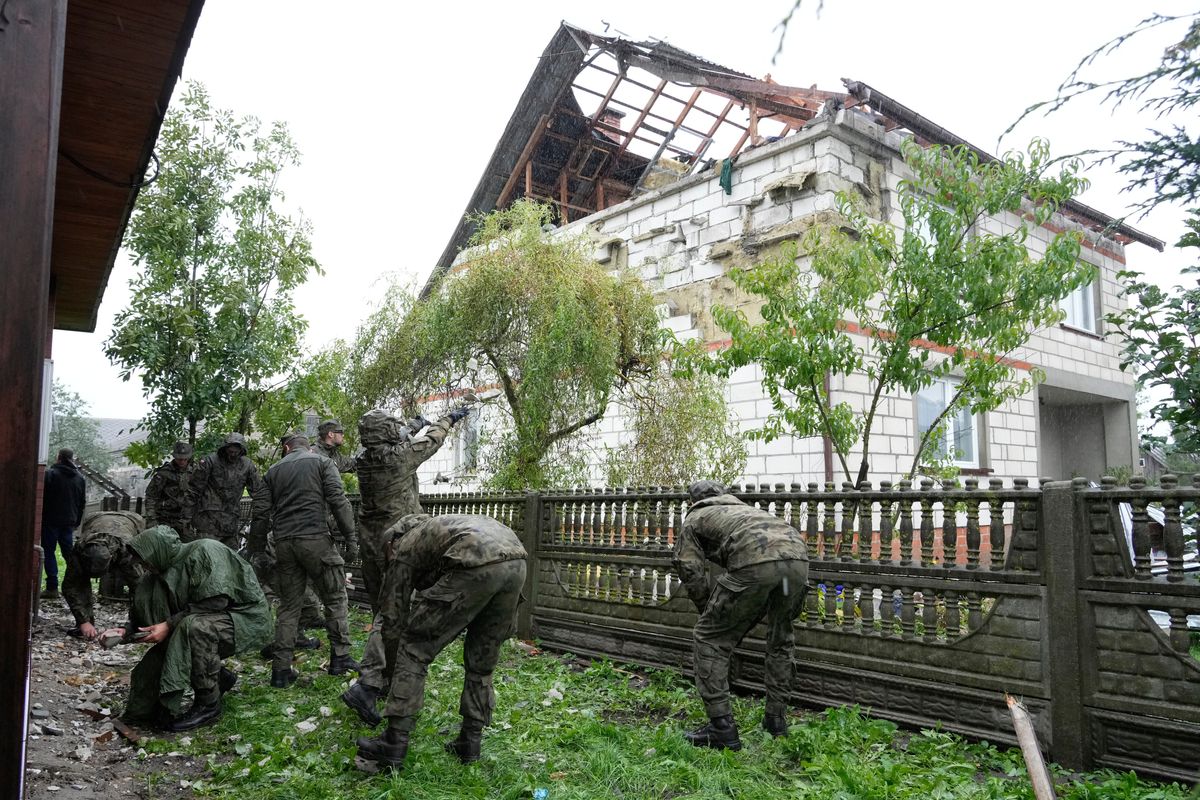As Russian drone incursions rattle Europe, Poland and Romania deploy a new defensive system

**Poland and Romania Deploy New Weapons System to Defend Against Russian Drones**
Poland and Romania are deploying a new weapons system aimed at defending against Russian drones, following a series of incursions into NATO airspace in recent months. These incursions exposed vulnerabilities within the alliance and heightened tensions across Europe.
The American Merops system, compact enough to fit in the back of a midsized pickup truck, uses artificial intelligence (AI) to identify and intercept drones. It can navigate effectively even when satellite and electronic communications are jammed. NATO military officials have confirmed that, besides Poland and Romania, Denmark will also deploy the Merops system as part of efforts to strengthen defenses along NATO’s eastern flank.
The goal is to create a heavily armed border with Russia stretching from Norway in the north to Turkey in the south, deterring Moscow’s forces from considering any incursions.
### Escalating Drone Threats Highlight Need for Advanced Defense
The urgency for such technology became clear in early September when around 20 Russian drones were detected flying into Polish airspace. In response, multimillion-dollar jets were scrambled against drones that cost only tens of thousands of dollars each. Romania also experienced a drone incursion, while drones temporarily closed airports in Copenhagen, Munich, Berlin, and Brussels. Additionally, sightings occurred near military bases in Belgium and Denmark.
Although the origin of all drones could not always be confirmed as Russian or linked directly to the war in Ukraine, the necessity to bolster defenses remains indisputable.
### How Merops Works
Colonel Mark McLellan, assistant chief of staff operations at NATO Allied Land Command, explained, “What this system does is give us very accurate detection. It’s able to target drones and take them down at a low cost as well. It’s a lot cheaper than flying an F-35 into the air to take them down with a missile.”
Drones fly low and slow, making them difficult to detect with radar systems designed for high-speed missiles. They can also be mistaken for birds or planes, creating substantial challenges. The Merops system helps to close these detection gaps by effectively “flying drones against drones,” either by firing directly at hostile drones or by relaying information to ground or air forces to neutralize the threat.
Brigadier General Thomas Lowin, deputy chief of staff operations at NATO Allied Land Command, added that Merops provides commanders with a critical window of time to assess threats and decide whether to engage. It is designed to protect both critical infrastructure, such as airports, and armed forces operating in combat zones.
### Current Deployments and Developments
NATO is currently deploying the first Merops systems along the borders of Poland and Romania. Denmark has also opted to acquire this technology, according to Brig. Gen. Lowin. Notably, former Google CEO Eric Schmidt has invested in Merops, though both he and the company maintain a low public profile, declining interview requests. Defense officials from Poland and Romania have also refrained from commenting publicly.
### The Bigger Picture: Responding to Changing Warfare
The recent Russian drone incursions have focused attention across Europe on the urgent need for innovative defenses against emerging forms of warfare. The Merops system is one example among many technologies European militaries require to gain an advantage in a drone conflict.
A prolonged drone conflict, or outright war similar to the ongoing situation in Ukraine, would strain Western financial resources and exhaust limited missile stocks. In response, European companies are developing new technologies—including drone-against-drone systems like Merops and advanced anti-drone missiles. The European Union countries have also agreed to collaborate on creating a “drone wall” along the bloc’s eastern border.
U.S. military leaders in Europe advocate for establishing an Eastern Flank Deterrence Line—a layered defense zone along NATO’s border. General Chris Donahue, commanding general of the U.S. Army in Europe and Africa and head of NATO’s Allied Land Command, stated in July his vision for a flexible network of sensors and command-and-control systems capable of integrating diverse hardware to keep pace with technological upgrades.
With Russia’s large conscript military, it possesses more immediately deployable forces near NATO borders. NATO must leverage its technological edge to counterbalance this manpower advantage, Donahue emphasized. Merops represents the initial phase in building these advanced defenses, a process expected to take two to five years.
### Instability on NATO’s Eastern Flank
The drone incursions and ongoing instability along NATO’s eastern flank stem largely from Russia’s war in Ukraine, now approaching its fourth year. This conflict has become a proving ground for drone technology, reshaping modern warfare and influencing European defense strategies.
Merops was selected due to its proven effectiveness in Ukraine. “If something doesn’t work there, it’s probably not worthwhile acquiring,” Brig. Gen. Lowin noted.
Drones are evolving rapidly, with each new variant requiring tailored countermeasures. Brigadier General Zacarias Hernandez, deputy chief of staff plans at NATO Allied Land Command, explained that the challenge is to quickly identify threats and develop responses in a matter of weeks—an accelerated production cycle reflecting the fast-changing battlefield.
Meanwhile, Russia continues mass production of attack drones, equipping them with cameras, jet propulsion engines, and advanced anti-jamming antennas. Russian President Vladimir Putin acknowledged in early October that Russia had initially suffered military knowledge gaps but now claims to field more advanced technology “within a matter of days.”
### A Technological Cat-and-Mouse Game
NATO officials describe the situation as a technological cat-and-mouse game among Ukraine, NATO, and Russia.
“We see what Russia is doing in Ukraine,” said Brig. Gen. Hernandez. “We have to be ready for that.”
—
*This article highlights the increasing role of drone warfare in modern conflicts and NATO’s strategic response by integrating cutting-edge technology like the Merops system to safeguard European security.*
https://mymotherlode.com/news/world/10150760/as-russian-drone-incursions-rattle-europe-poland-and-romania-deploy-a-new-defensive-system.html







